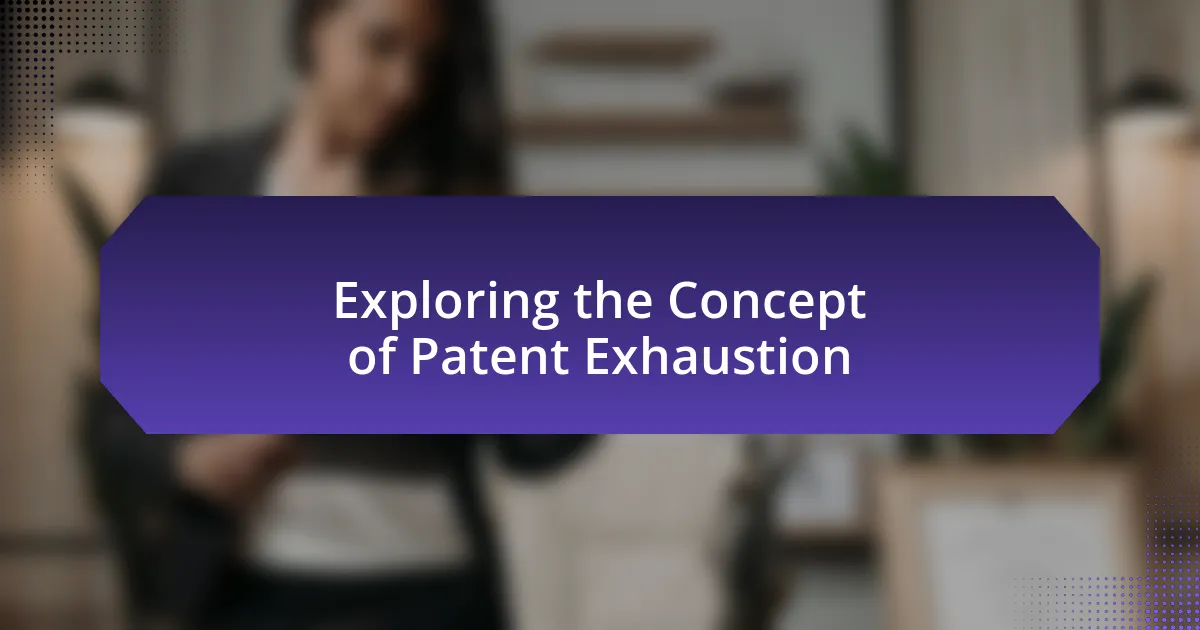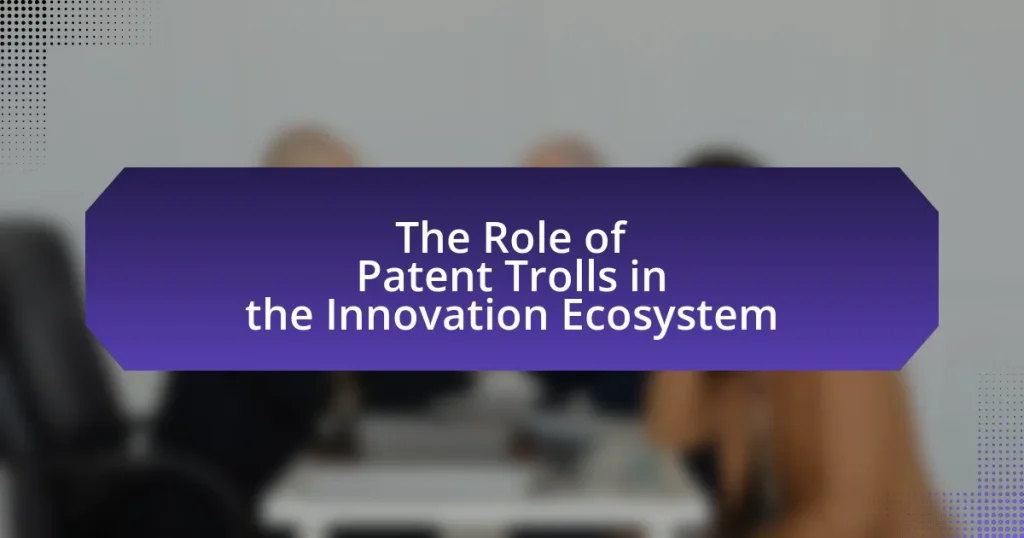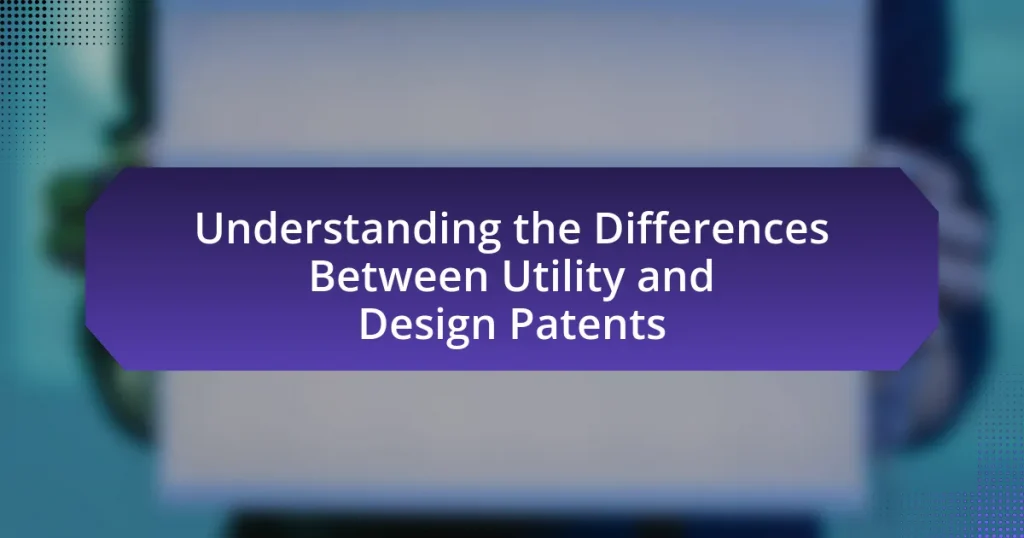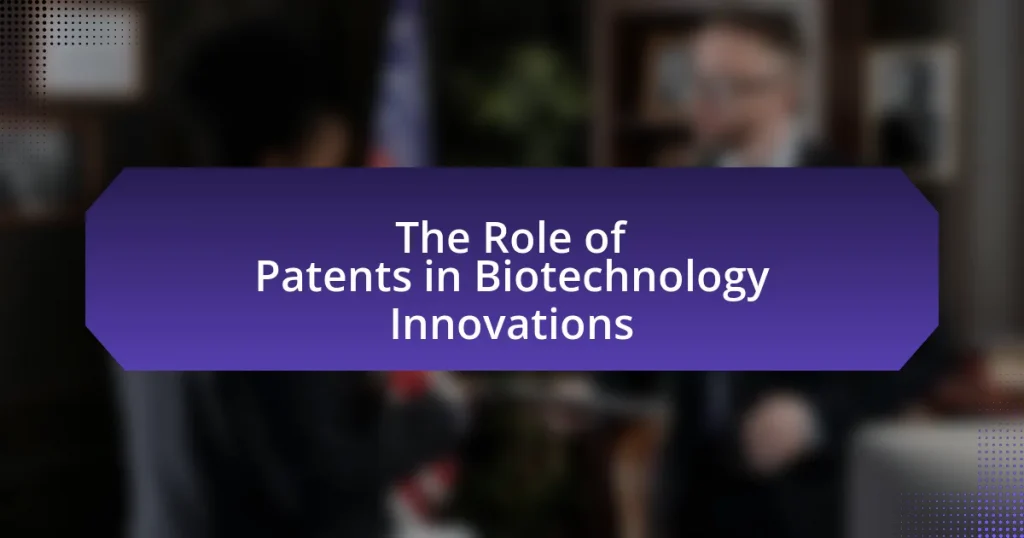Patent exhaustion, also known as the first sale doctrine, is a legal principle that limits the rights of patent holders after the sale of a patented item, preventing them from controlling its subsequent use, resale, or distribution. This article explores the implications of patent exhaustion in intellectual property law, highlighting key principles, differences from other legal doctrines, and its significance for both patent holders and consumers. It also examines the types of patent exhaustion, recent developments in case law, and practical considerations for businesses navigating this complex area of law. Notable cases, such as Quanta Computer, Inc. v. LG Electronics, Inc. and Impression Products, Inc. v. Lexmark International, Inc., are discussed to illustrate how these rulings shape future patent litigation and business practices.
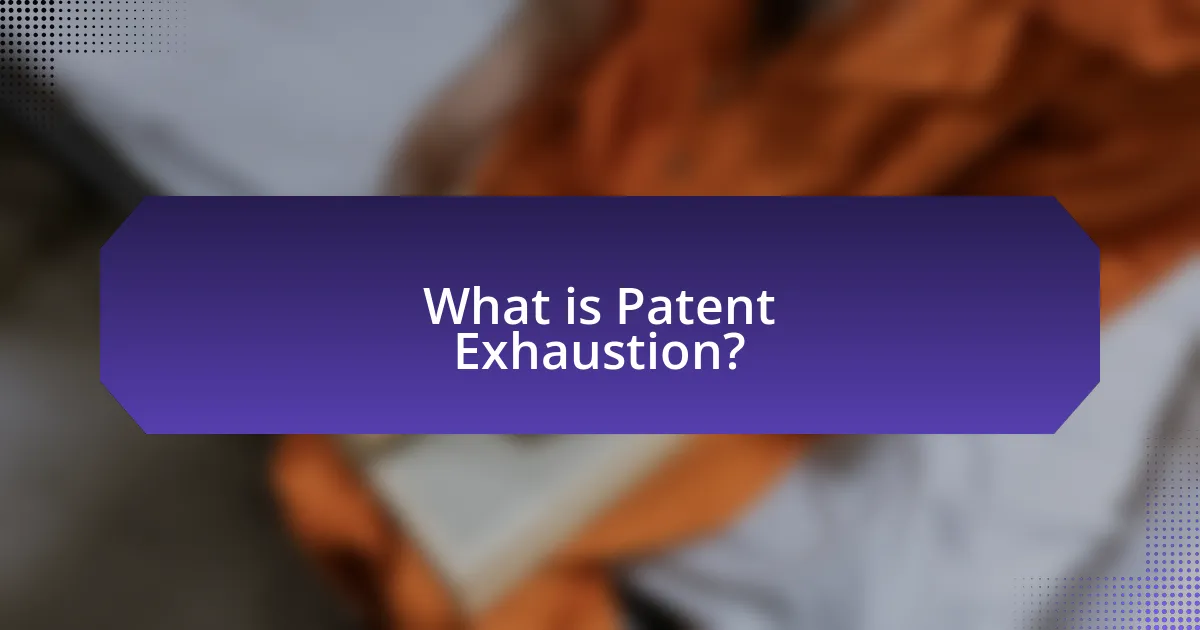
What is Patent Exhaustion?
Patent exhaustion, also known as the first sale doctrine, is a legal principle that limits the rights of a patent holder after the patented item has been sold. Once a patented product is sold, the patent holder cannot control the subsequent use, resale, or distribution of that product. This principle is grounded in U.S. law, as established in the Supreme Court case Quanta Computer, Inc. v. LG Electronics, Inc. in 2008, which affirmed that the sale of a patented item exhausts the patent holder’s rights to control that item.
How does Patent Exhaustion function in intellectual property law?
Patent exhaustion, also known as the first sale doctrine, functions in intellectual property law by limiting a patent holder’s rights after the patented item has been sold. Once a patented product is sold, the patent holder cannot impose restrictions on the use, resale, or distribution of that product, as established in the Supreme Court case Quanta Computer, Inc. v. LG Electronics, Inc. (2008). This legal principle ensures that once a consumer purchases a patented item, they have the right to use it freely without further interference from the patent owner, thereby promoting market competition and consumer rights.
What are the key principles underlying Patent Exhaustion?
The key principles underlying Patent Exhaustion are that once a patented item is sold by the patent holder or with their consent, the patent holder’s rights to control the use and resale of that item are exhausted. This principle prevents the patent holder from asserting patent rights against subsequent purchasers of the item. The doctrine is rooted in the idea that the patent holder has received their reward through the initial sale, thus allowing the buyer to use, sell, or modify the item without further restrictions from the patent holder. This principle is supported by legal precedents, such as the U.S. Supreme Court case “Quanta Computer, Inc. v. LG Electronics, Inc.” (2008), which affirmed that the sale of a patented item exhausts the patent rights associated with that item.
How does Patent Exhaustion differ from other legal doctrines?
Patent Exhaustion differs from other legal doctrines in that it specifically limits a patent holder’s rights after an authorized sale of a patented item, meaning the patent holder cannot control the use or resale of that item once it has been sold. This doctrine is rooted in the principle that once a product is sold, the patent rights associated with that product are exhausted, allowing the purchaser to use or resell the item without further restrictions from the patent holder. In contrast, other legal doctrines, such as copyright or trademark law, may allow for ongoing control over the use and distribution of the protected material even after an initial sale. For example, in copyright law, the original creator retains rights that can restrict how a work is used or shared, unlike the finality established by Patent Exhaustion.
Why is Patent Exhaustion important for patent holders and consumers?
Patent exhaustion is important for patent holders and consumers because it limits the rights of patent holders after a patented product has been sold, ensuring that consumers can use, resell, or modify the product without infringing on the patent. This legal principle prevents patent holders from imposing restrictions on the use of a product once it has been lawfully purchased, promoting market competition and consumer choice. For instance, the Supreme Court case Quanta Computer, Inc. v. LG Electronics, Inc. established that once a patented item is sold, the patent holder cannot enforce additional restrictions on its use, reinforcing the concept that consumers have the right to fully utilize their purchased products.
What implications does Patent Exhaustion have on the resale of patented products?
Patent exhaustion implies that once a patented product is sold by the patent holder or with their consent, the patent holder’s rights to control the resale of that product are limited. This legal doctrine allows the purchaser to resell the product without infringing on the patent, as the patent rights are considered exhausted after the first sale. For instance, in the case of Quanta Computer, Inc. v. LG Electronics, Inc., the U.S. Supreme Court affirmed that patent exhaustion applies to components sold to manufacturers, allowing those manufacturers to sell finished products without further licensing from the patent holder. Thus, patent exhaustion facilitates market competition by enabling the resale of patented products, ensuring that consumers can freely trade and sell items they have purchased.
How does Patent Exhaustion affect competition in the market?
Patent exhaustion limits the ability of patent holders to control the resale and use of their products after an initial sale, thereby enhancing competition in the market. This legal doctrine allows consumers and secondary markets to freely trade patented goods without infringing on the patent holder’s rights, which can lead to lower prices and increased availability of products. For instance, the Supreme Court’s decision in Quanta Computer, Inc. v. LG Electronics, Inc. (2008) reinforced that once a patented item is sold, the patent holder cannot impose restrictions on its use or resale, promoting a more competitive environment. Consequently, patent exhaustion encourages innovation and market entry by reducing barriers for competitors who can now access and utilize previously patented technologies.
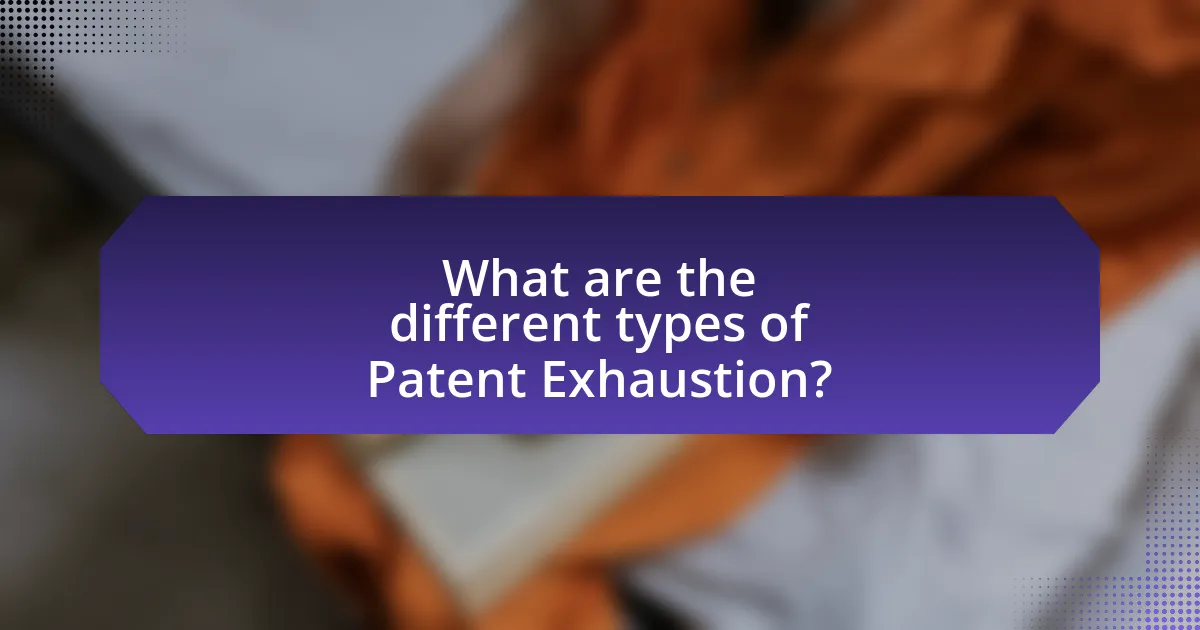
What are the different types of Patent Exhaustion?
There are two main types of patent exhaustion: national exhaustion and international exhaustion. National exhaustion occurs when a patented product is sold within a specific country, thereby preventing the patent holder from asserting rights over that product in that country. International exhaustion, on the other hand, allows for the resale of a patented product across borders after it has been sold in any country, meaning the patent holder cannot control the product’s distribution once it has been sold anywhere in the world. This distinction is crucial in understanding how patent rights are enforced and limited in different jurisdictions.
How does national Patent Exhaustion differ from international Patent Exhaustion?
National patent exhaustion occurs when a patent holder’s rights are exhausted after the first sale of a patented product within a specific country, meaning that the purchaser can resell or use the product without further permission from the patent holder. In contrast, international patent exhaustion refers to the principle that once a patented product is sold in one country, the patent holder cannot enforce their rights in other countries where the product is subsequently sold. This distinction is significant because national exhaustion limits the scope of patent rights to the jurisdiction of the initial sale, while international exhaustion allows for broader distribution and resale across borders without additional licensing.
What are the legal frameworks governing national Patent Exhaustion?
National patent exhaustion is primarily governed by national laws and international treaties that dictate the rights of patent holders and the limits of those rights after a patented product has been sold. In many jurisdictions, the principle of national patent exhaustion allows the first sale of a patented product to exhaust the patent holder’s rights, meaning that the purchaser can use, sell, or distribute the product without further permission from the patent owner.
For example, in the United States, the legal framework is shaped by the Supreme Court’s decision in “Lexmark International, Inc. v. Impression Products, Inc.,” which affirmed the doctrine of patent exhaustion. Similarly, in the European Union, the legal framework is influenced by the European Court of Justice’s rulings, which establish that once a product is sold within the EU, the patent rights are exhausted. These frameworks ensure that once a patented item is sold, the patent holder cannot impose restrictions on its resale or use, thereby promoting market competition and consumer rights.
How do international treaties influence Patent Exhaustion practices?
International treaties significantly influence Patent Exhaustion practices by establishing common legal frameworks that govern the rights of patent holders and the distribution of patented goods across borders. For instance, treaties like the Agreement on Trade-Related Aspects of Intellectual Property Rights (TRIPS) set minimum standards for intellectual property protection, which member countries must adhere to, thereby affecting how patent rights are enforced and exhausted internationally. This harmonization can lead to a more uniform application of patent exhaustion principles, such as the “first sale doctrine,” which allows the resale of patented products without the patent holder’s permission after the first sale. Consequently, the alignment of national laws with international treaty obligations can either strengthen or weaken the scope of patent exhaustion, depending on the specific provisions and interpretations adopted by individual countries.
What are the exceptions to Patent Exhaustion?
The exceptions to patent exhaustion include the ability of patent holders to impose restrictions on the use of their patented products through licensing agreements, the sale of components that are not intended for use in the patented invention, and the application of the first sale doctrine only to authorized sales. For instance, if a patented product is sold without the patent holder’s permission, the patent holder may still enforce their rights against subsequent purchasers. Additionally, if a product is sold in a way that does not convey all rights to the buyer, such as in a lease or conditional sale, patent exhaustion may not apply. These exceptions are supported by legal precedents, such as the Supreme Court case Quanta Computer, Inc. v. LG Electronics, Inc., which clarified the boundaries of patent exhaustion in relation to licensing agreements.
What circumstances can lead to the limitation of Patent Exhaustion rights?
Patent exhaustion rights can be limited by circumstances such as contractual restrictions, territorial limitations, and the nature of the patented product. Contractual restrictions occur when a patent holder imposes conditions on the sale of a product, which can prevent the buyer from reselling it. Territorial limitations arise when a patent is only valid in specific jurisdictions, meaning that exhaustion does not apply outside those areas. Additionally, if the product is modified or used in a manner not intended by the patent holder, exhaustion rights may not apply, as seen in cases where the product is altered significantly after the initial sale. These factors collectively define the boundaries within which patent exhaustion rights operate.
How do licensing agreements impact Patent Exhaustion?
Licensing agreements can significantly influence the doctrine of patent exhaustion by determining the scope of rights transferred to licensees. When a patent holder licenses a product, the agreement may specify whether the licensee has the right to resell or use the patented item, which can either trigger or limit patent exhaustion. For instance, if a license grants the right to sell the product, the patent holder may lose the ability to enforce patent rights against subsequent purchasers, thereby invoking patent exhaustion. Conversely, if the license restricts resale, the patent holder may retain rights to control the product’s distribution, preventing exhaustion. This relationship is supported by legal precedents, such as the Supreme Court’s decision in Quanta Computer, Inc. v. LG Electronics, Inc., which established that a licensee’s rights can exhaust the patent holder’s rights if the license permits unrestricted resale.
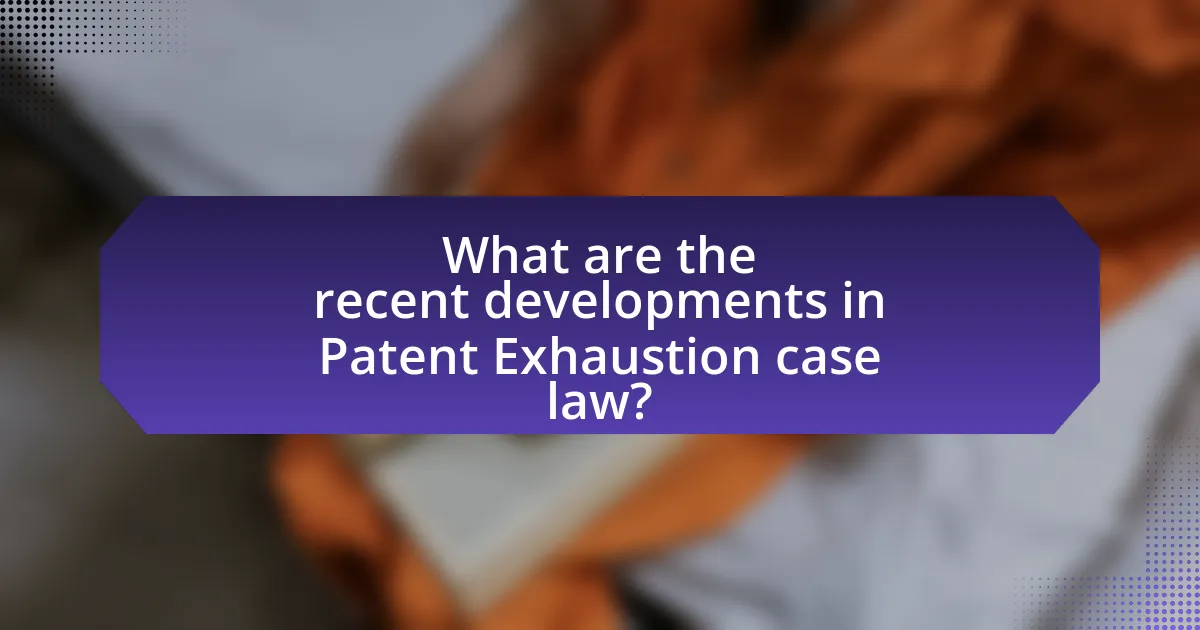
What are the recent developments in Patent Exhaustion case law?
Recent developments in Patent Exhaustion case law include the Supreme Court’s decision in the case of Lexmark International, Inc. v. Impression Products, Inc., which clarified that the first sale of a patented item exhausts the patent holder’s rights to control the item’s use and resale, regardless of any restrictions imposed by the patent holder. This ruling emphasized that once a patented product is sold, the patent owner cannot impose limitations on how that product is used or resold, reinforcing the principle of patent exhaustion. Additionally, lower courts have continued to interpret this ruling in various contexts, further shaping the application of patent exhaustion in cases involving digital goods and international sales.
How have recent court rulings shaped the understanding of Patent Exhaustion?
Recent court rulings have clarified the doctrine of Patent Exhaustion by establishing that the sale of a patented item exhausts the patent holder’s rights to control the use and resale of that item. For instance, the Supreme Court’s decision in Impression Products, Inc. v. Lexmark International, Inc. (2017) reinforced that once a patented product is sold, the patent holder cannot impose restrictions on its use or resale, regardless of whether the sale occurred domestically or internationally. This ruling has significant implications for how patent rights are enforced and has led to a broader interpretation of exhaustion, emphasizing the importance of the first sale doctrine in limiting patent holders’ control over their products post-sale.
What notable cases have influenced Patent Exhaustion doctrine?
Notable cases that have influenced the Patent Exhaustion doctrine include the Supreme Court’s decisions in Quanta Computer, Inc. v. LG Electronics, Inc. and Impression Products, Inc. v. Lexmark International, Inc. In Quanta, the Court held that the sale of a patented item exhausts the patent holder’s rights to control the use and sale of that item, establishing a clear precedent for the doctrine. Similarly, in Impression Products, the Court reaffirmed that once a patented item is sold, the patent rights are exhausted, regardless of any restrictions the patent holder attempts to impose. These cases collectively underscore the principle that patent rights are limited after the first sale of a patented product, shaping the legal landscape of Patent Exhaustion.
How do these rulings affect future patent litigation?
These rulings significantly influence future patent litigation by clarifying the boundaries of patent exhaustion, which limits a patent holder’s rights after an authorized sale. The Supreme Court’s decisions, such as in the case of Impression Products v. Lexmark International, establish that once a patented item is sold, the patent holder cannot impose restrictions on its use or resale. This precedent reduces the ability of patent owners to control the downstream market, thereby encouraging competition and innovation. As a result, future litigations will likely focus more on the initial sale agreements and less on post-sale restrictions, reshaping the strategies employed by patent holders in enforcing their rights.
What practical considerations should businesses keep in mind regarding Patent Exhaustion?
Businesses should consider that patent exhaustion limits their ability to control the resale and use of patented products after an authorized sale. This principle means that once a product is sold, the patent holder cannot impose restrictions on its further distribution or use. Companies must ensure compliance with this doctrine to avoid legal disputes, as seen in cases like Quanta Computer, Inc. v. LG Electronics, Inc., where the Supreme Court affirmed that patent rights are exhausted after an authorized sale. Additionally, businesses should be aware of the implications for licensing agreements, as patent exhaustion can affect the enforceability of terms that restrict downstream use or resale. Understanding these aspects is crucial for effective patent management and risk mitigation.
How can companies navigate the complexities of Patent Exhaustion in their operations?
Companies can navigate the complexities of Patent Exhaustion by implementing clear licensing agreements and understanding the scope of their patent rights. By defining the terms of use and distribution in their licensing agreements, companies can mitigate risks associated with unintended exhaustion of patent rights. For instance, the Supreme Court’s decision in Quanta Computer, Inc. v. LG Electronics, Inc. established that once a patented item is sold, the patent holder cannot impose further restrictions on its use, emphasizing the importance of precise licensing terms. Additionally, companies should regularly review their patent portfolios and stay informed about legal precedents to adapt their strategies accordingly, ensuring compliance and protection of their intellectual property.
What best practices can help businesses protect their interests related to Patent Exhaustion?
To protect their interests related to Patent Exhaustion, businesses should implement clear licensing agreements that specify the scope of rights granted to licensees. These agreements should detail the limitations on the use and resale of patented products to prevent unintended exhaustion of patent rights. Additionally, businesses should monitor the distribution channels of their products to ensure compliance with licensing terms, as unauthorized sales can lead to patent exhaustion. Furthermore, maintaining thorough documentation of patent ownership and licensing agreements can provide legal support in disputes. Historical cases, such as the Supreme Court’s decision in Quanta Computer, Inc. v. LG Electronics, Inc., illustrate the importance of clear licensing terms in preserving patent rights against exhaustion claims.
